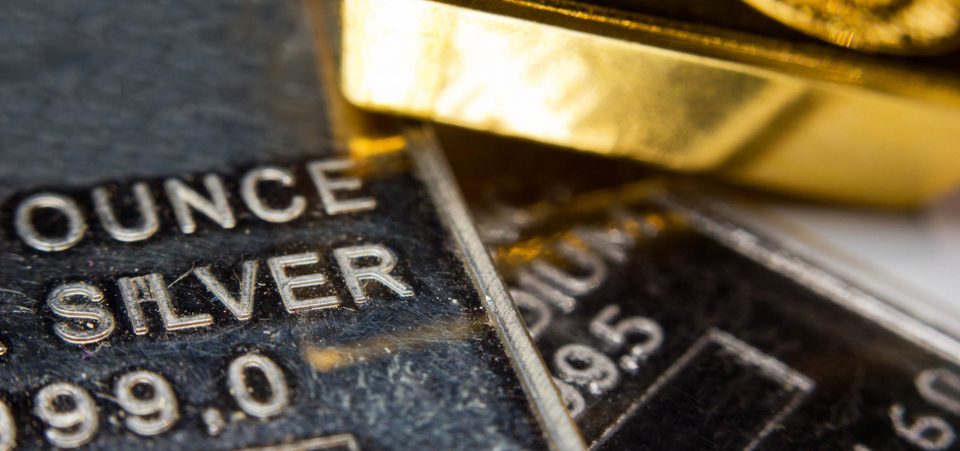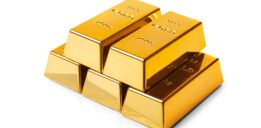What’s Next for the Precious Metals in 2017?
The big news flash for investors is that gold prices today have sunk to the lowest level in four months, stopping at $1,214 per ounce. Silver prices today were also at their lowest levels of the year. Spot silver prices closed at $15.64 on July 10. Still, while lower than they have been for the past few weeks, there’s good news.
Could this be some sort of mistake? Should you panic? No, and that’s the good news; both gold and silver prices closed higher. In particular, gold would appear to have confirmed its floor price of $1,200 per ounce. Analysts may have started to worry. As gold prices started to drop in the first full week of July, it seemed to be a mistake. Then, as both silver and gold prices continued to drop, precious metal investors were justified to worry that precious metals really did begin to lose their shine.
June was not kind to precious metal prices. The second quarter was especially disappointing for gold prices, which settled around $1,240 an ounce, dropping by about half a percentage point. The reason for the pessimistic precious metals analysis has much to do with the U.S. Federal Reserve and little to do with the actual economy.
Janet Yellen and the Fed have used rather aggressive verbiage to warn Americans that the dreaded inflation is making its return. Yet inflation seems to be a figment of Yellen’s imagination, owing to the alleged effects of Trump’s tax cuts and economic stimulus programs. Sometimes, one wonders what newspapers these “high” officials read. The U.S. jobs report headlines have welcomed the job gains, but they’ve downplayed the many continued job losses.
This has kept job losses and gains such that the overall employment picture has not changed. Evidently, they’re consulting the kinds of publications too busy scrutinizing dubious statistics. They are not seeing the stories about countless U.S. retail chains either closing hundreds of their outlets or shutting down stores in every state. From Sears Holdings Corp (NASDAQ:SHLD) to Saks Incorporated (NYSE:SKS) and J C Penney Company Inc (NYSE:JCP) in-between, retailers are finding it harder to survive. Americans are too busy paying down their tremendous debt loads to go shopping–if they could even afford it. (Source: “Jobs report beats big, unemployment rate climbs,” Business Insider, July 7, 2017.)
It’s All About Inflation
Auto sales are slowing and auto loans are reaching a dangerous point. Indeed, rather than returning, inflation is slowing down. The risk of “deflation” remains. The economy is growing, but its GDP growth rate of 1.7% might best be described as lukewarm by American standards. The Fed has fixated on reaching a two-percent annual inflation rate. Instead, it wants to raise interest rates for the remainder of the year, as if the economy had already achieved this target; it hasn’t. Rather, the economy is still flirting with deflation.
Listening to the officials of the American Central Bank of last week, one could imagine that the inflation returns. But it is the opposite. For if it is one thing to talk about inflation below the two-percent target of the Fed, it is another to see it flirting with deflation. Short-term inflation trends are very close to zero, levels we have not seen since the Great Recession and the advent of quantitative easing. For example, one big driver of inflation, the price of oil, has been dropping over the past few months.
The dubious excitement over the prospect of central banks in the United States (the Fed) and in Europe (the European Central bank) terminating their easy interest rates and “accommodative” policies is premature. There is no reason for such optimism whatsoever. The Fed may be acting prematurely by wanting to tighten the screw. However, its reasoning has little to do with the actual economy, and sooner or later, it may have to stop increasing rates or decrease them again.
As for precious metals’ prices, in 2017 they started to gain momentum. That means that their performance, viewed against the past few years, remains respectable. The recent weakness has been, admittedly, significant, but it happened as the dollar itself has lost ground. The greenback usually moves in the opposite direction to gold.
This further suggests that the economy itself is weak, and that rather, the Fed may have acted prematurely. Meanwhile, the relatively lower precious metals prices, coupled with world tensions, persist, and risks of catastrophic events for the stock market–itself at unreasonably high capitalization–should help boost demand for gold and silver in the second half of 2017.






